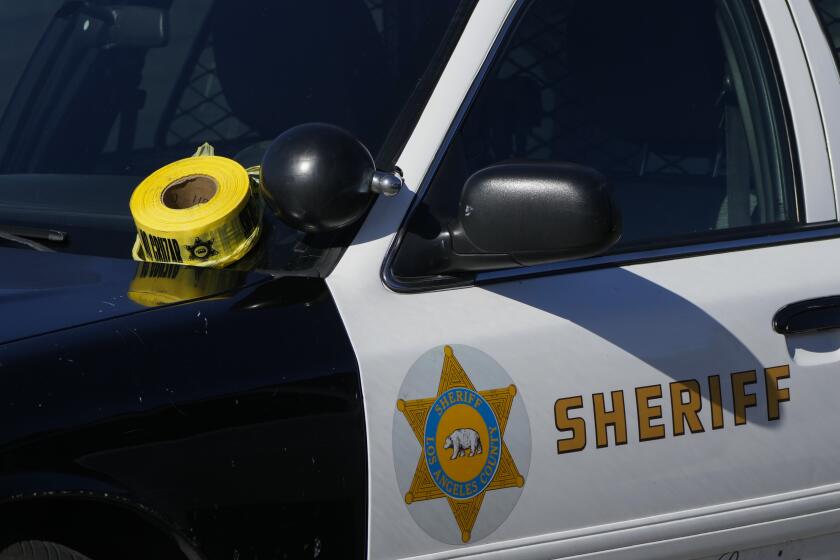‘Intelligent Highway’ Gets a Test Drive in Southland : Transportation: Wires embedded in freeways to monitor traffic could also send information to computers in vehicles. Caltrans and a university are sponsoring a tryout of the system this week.
Inching along the Pomona Freeway on Wednesday, the fleet of five Dodge Colts did not stand out from the mass of traffic coursing in and out of Los Angeles.
But at regular intervals, the location, direction and speed of the nondescript subcompacts appeared on computer screens in a hotel conference room 25 miles away near Los Angeles International Airport. News about congestion, collisions, construction and any other road-choking events, meanwhile, was broadcast to the specially equipped cars as they sped over wire loops embedded in the roadway, and the information appeared on dashboard computers.
Researchers from Caltrans and Cal Poly San Luis Obispo arranged the demonstration, which will run through the end of the week, to test public and industry interest in “intelligent highway” technology that is being pioneered in California.
The technology is called inductive radio--”Inrad” for short--and the researchers are trying to see how ordinary drivers and commercial shipping and delivery companies might use it as is, or how it could be modified to make it more useful.
“I hate to put it in the context of we’re a solution in search of a problem, but that is where we are,” said Walt Winter, manager of the Inrad project for Caltrans. “We’ve invited florists, UPS, Federal Express--anybody with a dispatch system--here today to ask them if they think they could use this kind of system.”
The key to Inrad is large wire loops that Caltrans has embedded in freeways to monitor traffic flow. Caltrans traffic operations manager Steve Leung said Caltrans already has installed about 900 such loops under about half of the 600 miles of freeway in Los Angeles County.
Cars, trucks and buses create a magnetic field as they pass over the wire loops. By sensing the field, the loops let Caltrans count the vehicles. Freeway speeds and congestion can be determined by measuring the time it takes to pass between loops.
That information now is used to generate the freeway condition reports broadcast by radio stations and displayed on electronic freeway message boards, as well as to dispatch tow trucks to stalled cars.
But researchers also decided that the loops can serve as low-power radio antennas, receiving and sending short bursts of information to passing cars equipped with transceivers and computers. That is the idea behind Inrad.
Inrad is one of several interactive vehicle location and communication systems under study by Caltrans to ease freeway congestion. Along with microwave equipment being studied in Northern California, weak-signal Inrad could be one way to warn drivers of congestion ahead and divert them to other freeways or major surface streets. In this way, they could avoid the problem instead of compounding it.
With additional investment, Winter said, the technology also could someday let dispatchers relay specific instructions to individual vehicles--such as adding sales calls or canceling an order--in a fashion that is safer, more private and more precise than two-way radio.
Although hundreds of miles of freeway already are wired and Inrad’s electronic hardware can be bought off the shelf, Inrad--or some system like it--is still “down the road a way,” Winter said. Engineers are simply casting about for a way to make freeways work better, he said.
“People realized in the early ‘70s that we can’t build our way out of congestion,” Leung said. “There were too many economic, environmental and social concerns.”
Researchers, meanwhile, conceded there could be political problems with the technology. If used to find cars with expired registrations, for example, there could be civil rights questions.
But researchers are undeterred.
“Eventually, it’s going to happen--no question,” Winter said.
More to Read
Sign up for Essential California
The most important California stories and recommendations in your inbox every morning.
You may occasionally receive promotional content from the Los Angeles Times.










